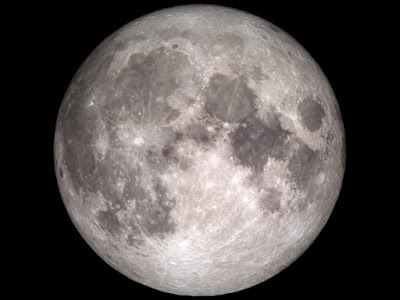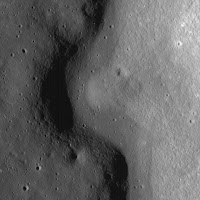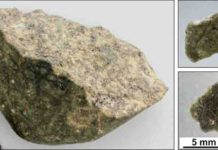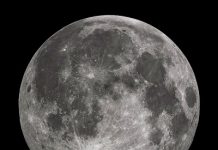
Scientists have long wondered if water lurks beneath the Moon’s surface. Many thought the scalding impact that formed the Moon long ago would have reduced or eliminated most volatile elements, including chlorine, and the hydrogen necessary to form water. Also, persuasive 2010 work on chlorine isotopes points to a bone-dry interior, despite signatures of water and other volatiles in lunar volcanic glasses. Now new experimental findings presented Thursday at the 2015 American Geophysical Union Fall Meeting in San Francisco, Calif., suggest that lunar subsurface water, today or in the past, remains a possibility after all.
Simulated Magma Cooling

Knowing that compositions of lunar magmas offer snapshots of the Moon’s interior, a team of scientists has recreated lunar subsurface conditions in the lab to investigate the fates of possible interior water and other volatiles that such magmas may have contained.
The researchers used an apparatus called a piston cylinder to melt pieces of synthetic magma based on the chemical recipes of soil samples collected by Apollo 14. The tests subjected the rocks to the temperatures and pressures expected 100 kilometers beneath the lunar surface. Once the simulated magma melted at 1400°C, the researchers allowed it to cool and crystallize at varying rates: from 10 minutes to 6 hours.
“We simulated magma coming to the surface, then cooled it quickly or slowly,” said Gokce Ustunisik, a research and education fellow in the Department of Earth and Planetary Sciences at the American Museum of Natural History in New York City and lead author of the study. As the faux magma cooled, the team measured chemical ratios and abundances, which “told us how volatiles escaped,” she added.
Water was the quickest to go. After only 10 minutes, 95% had evaporated, compared to 63% of chlorine and 38% of fluorine. After the water had vanished, the other chemicals “played their own game,” Ustunisik said. For longer-cooling magma, most of the volatiles were gone by the 6-hour mark: 95% of the chlorine had evaporated, and 71% of fluorine had vaporized.
No Water or Escaped Water?
The rapid water loss could answer why scientists haven’t seen much water in soil samples collected from the Moon even if water was present in the Moon’s subsurface, Ustunisik explained. Even if magma had cooled very quickly, water still would have escaped, she said.
This experiment “threw a monkey wrench” into the idea that previous analyses, based on chlorine isotopes, are sufficient to infer the Moon is anhydrous, said Ricardo Arevalo, a NASA researcher studying mantle-derived materials at Goddard Space Flight Center in Greenbelt, Md., who was not involved in the study. “It’s more complicated than that.”
Scientists from the American Museum of Natural History in New York City; Stony Brook University in Stony Brook, N.Y.; and the University of New Mexico in Albuquerque collaborated on this new study.
Note: The above post is reprinted from materials provided by American Geophysical Union.










